A community hosts walks every Sunday to highlight civic issues faced by Mumbai’s pedestrians. We joined their recent walk on NM Joshi Marg
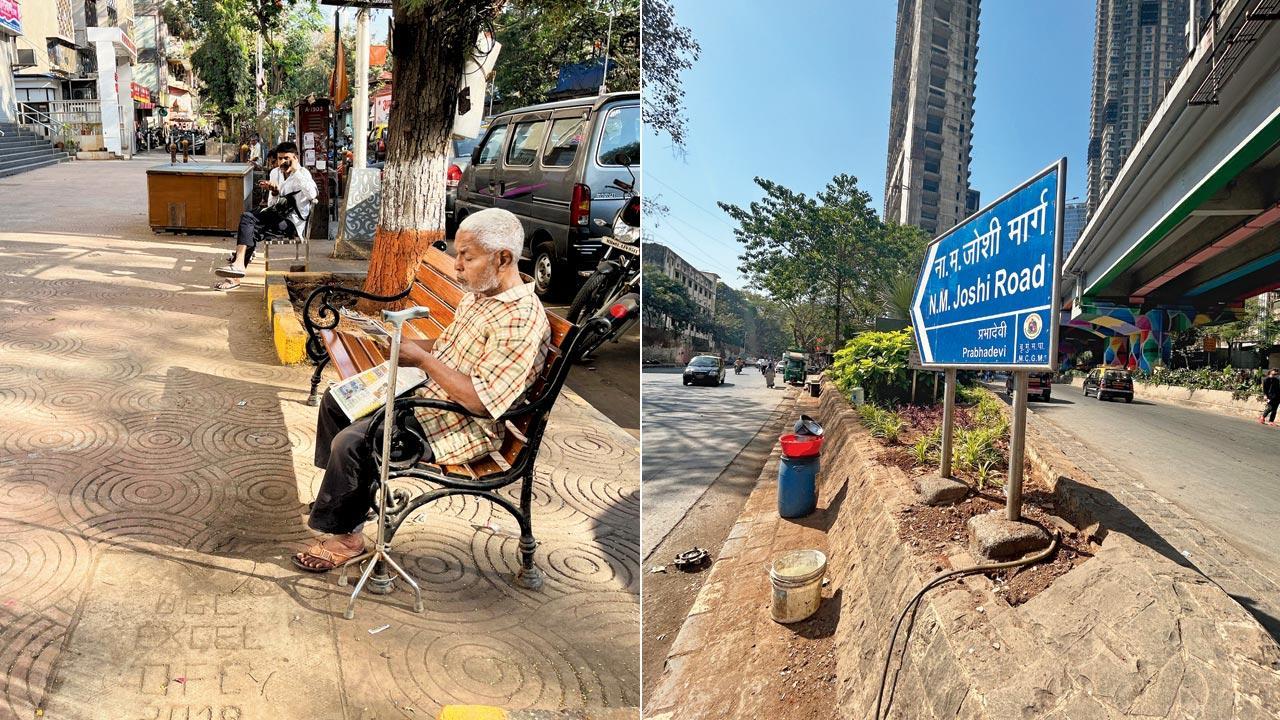
Benches on wide footpaths along (right) NM Joshi Marg add to the experience of walking around freely in the city
Amid the many fitness challenges surfacing online, the one that never dies is taking 30,000 steps daily for a week for better health, fitness and sleep. While that would roughly amount to a 24-km walk, our walk last Sunday began with baby steps aimed to cover a distance of 2.3 km along the NM Joshi Marg, from Byculla Station to Lower Parel. The organisers were Walking Project — a community that aims to create a safe, convenient and enjoyable walking experience across MMR (Mumbai Metropolitan Region Greater Mumbai).
ADVERTISEMENT
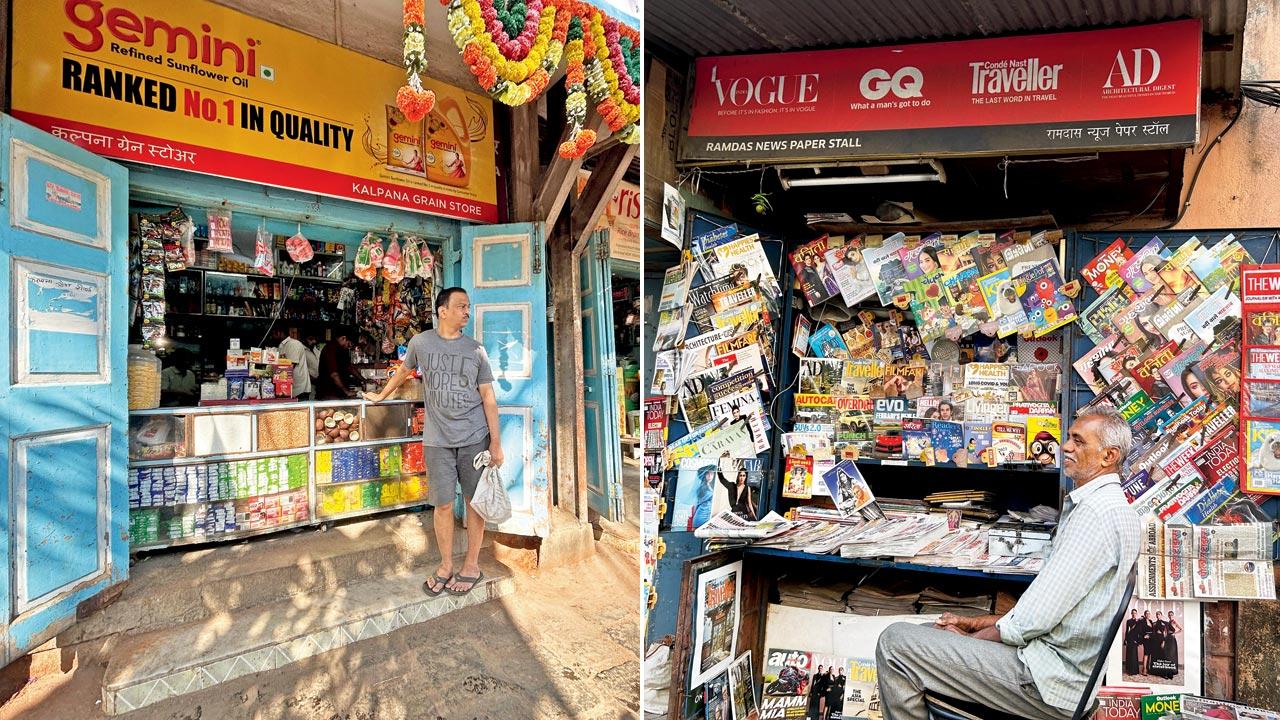 (Left, right) Kalpana Grain Store and Ramdas Newspaper Stall. Pics/Devanshi Doshi, Rishi Aggarwal
(Left, right) Kalpana Grain Store and Ramdas Newspaper Stall. Pics/Devanshi Doshi, Rishi Aggarwal
When we reached Byculla railway station at 8.30 am, Vedant Mhatre, their 25-year-old programme manager, is checking the AQI levels using his device. “It’s 58,” he notes delightfully, “Somehow, whenever I take this device out, the readings are always satisfactory!” We are joined by a 24-year-old corporate lawyer, a tech journalist and the founder of the community Rishi Aggarwal, who gives us a badge that reads ‘I love walking’ that we tag on our tees, and we’re off.
Founded in 2012 by Aggarwal, the community was initially involved only with corporators, officials and BMC to improve the walkability in the city. In May of 2023, Mhatre and Aggarwal restarted the project that was temporarily discontinued in 2017; this time, with a new goal to directly involve the pedestrians and gain community support towards their cause of making Mumbai walkable again.
 (Left) Rishi Aggarwal; (right) Vedant Mhatre
(Left) Rishi Aggarwal; (right) Vedant Mhatre
This is their 14th walk. Mhatre is the data custodian who has data-backed information on existing and non-existing pedestrian infrastructure, and civic challenges. He draws parallels between their previous walks, infrastructure abroad and the footpath that we are using. He has access to thousands of images and maps saved in a tablet. “It helps to interact with participants when I draw comparisons,” he explains. Aggarwal, on the other hand, is the storyteller. He digs up political and civic anecdotes from the past and seamlessly joins the dots with Mhatre’s data. With the corporate lawyer and technology journalist, the walk is information-packed, and yet a light-hearted experience.
Observations and readings:
1 Byculla Station: Despite having enough space for a drop-off zone right at the station, it is made inaccessible due to probable clogging of buses and private vehicles. This leads to four-wheelers halting outside the station, instead, thereby affecting traffic as well as pedestrian movement. Aggarwal and Mhatre note that this stretch is a commentary on how we utilise surrounding areas.
2 Footpaths: In the British era, footpaths were kept wide on each side. Sadly, the city has more than halved and cut these, and the bits left are now occupied by hawkers. “We are not against hawkers,” Mhatre explains, “We think that they bring life to the roads.” However, due to roads getting narrower, there is little space for pedestrians. Footpaths outside the station were comparatively more walkable as they are wide on most parts (a seven-meter wide footpath is recommended for a 21-m wide street in a city-level commercial street, high street or shopping street). We also pass by Kalpana Grain Store, a 90-year-old grocery shop and Ramdas Newspaper Stall, a 50-year-old newspaper stall on the footpaths; the latter has been given a notice citing a redevelopment project.
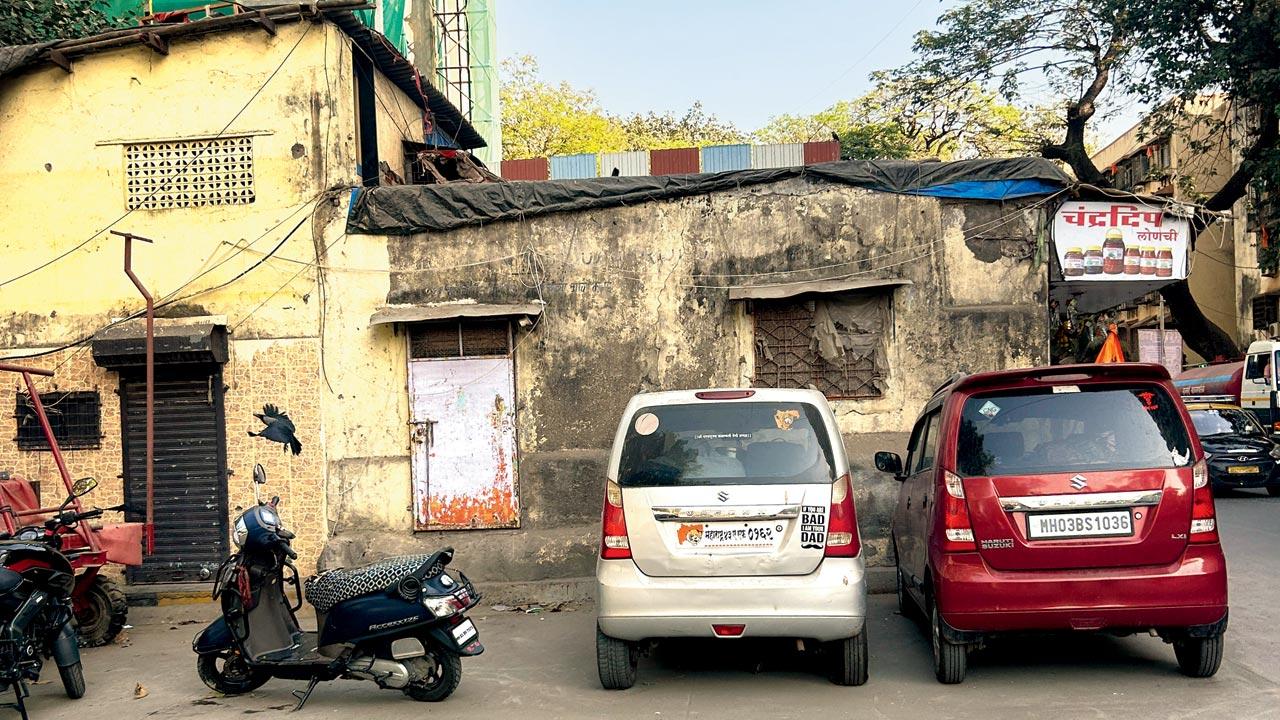 Perpendicular parking of cars is illegal and takes up space for walking
Perpendicular parking of cars is illegal and takes up space for walking
3 Parking: Locations where footpaths were narrowed down or non-existent were taken up by cars parked in a perpendicular fashion. “Cars must be parked parallel to the footpaths, if at all. Plus, unlike hawkers, they bring no usability to the pedestrians,” the duo said. “Did you know that 70 per cent of the population doesn’t own a vehicle? Yet, most of the city’s roads are planned keeping in mind the minority that owns one,” reveals Mhatre.
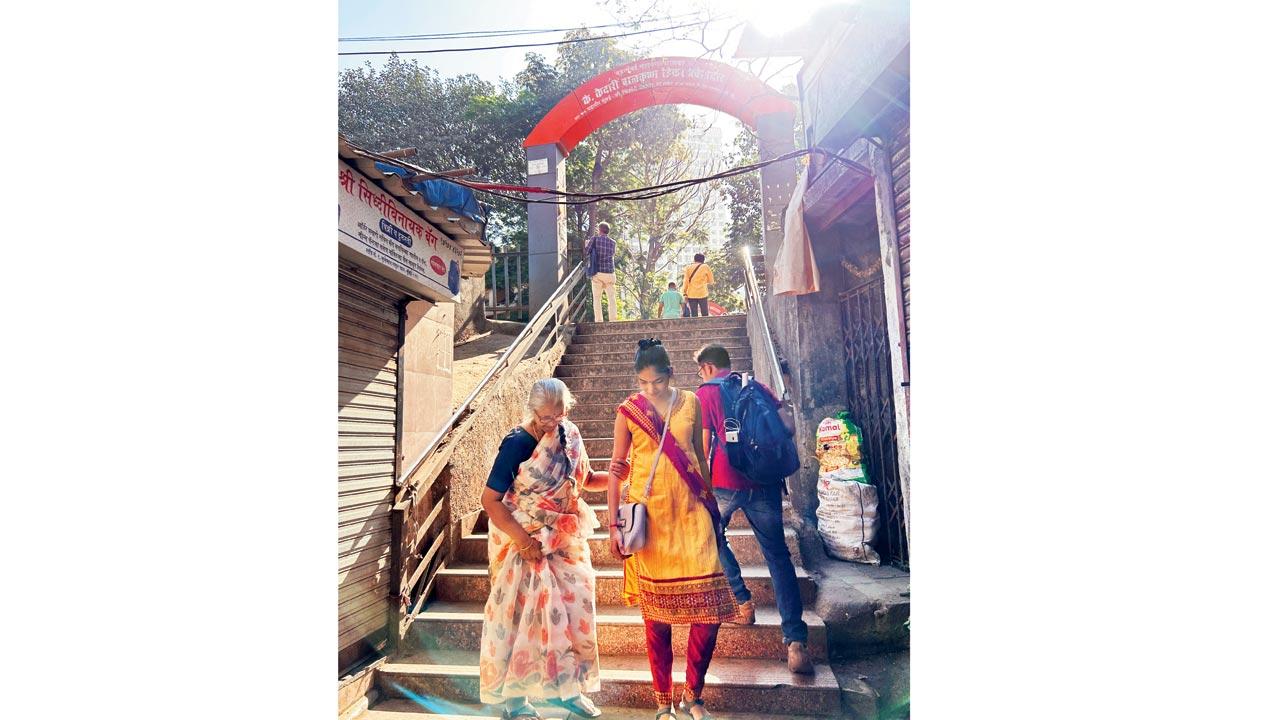 A stairway that opens to Chinchpokli Station Bridge
A stairway that opens to Chinchpokli Station Bridge
4 Desire line: The NM Joshi Mark allows a flight of stairs to open to the Chinchpokli Station Bridge, which the duo says is a good use of what they call a Desire Line. A desire line is a space that pedestrians will use to walk on to avoid taking a roundabout, irrespective of whether the BMC makes it pleasant to walk on. Walk-through plazas can also be incorporated into the design.
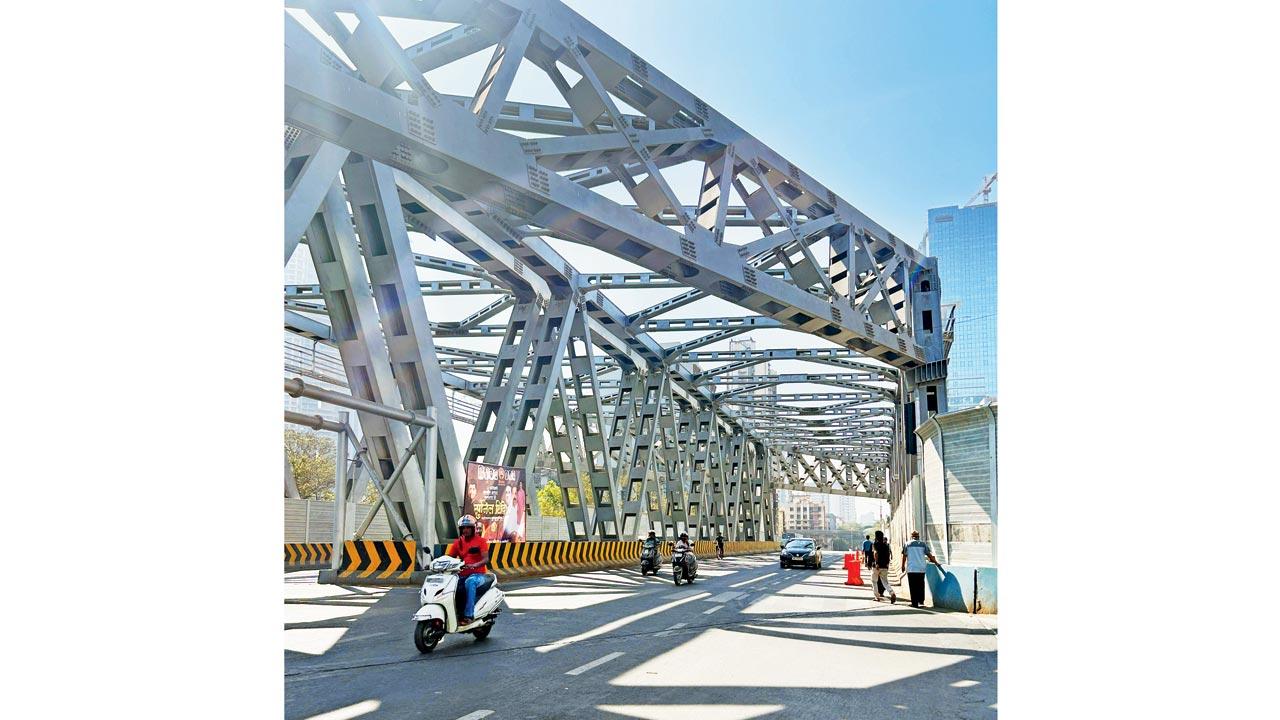 Delisle Bridge doesn’t have provisions for pedestrians to walk
Delisle Bridge doesn’t have provisions for pedestrians to walk
5 Delisle Bridge: This bridge that opened in 2023 does not provide footpaths that connect pedestrians to the station, unlike the previous avatar of this bridge; causing pedestrians to have to take the route under it. A narrow make-shift footpath made by few barricades on one side of the bridge is also likely to disappear, making the bridge all the more inaccessible or dangerous for pedestrians.
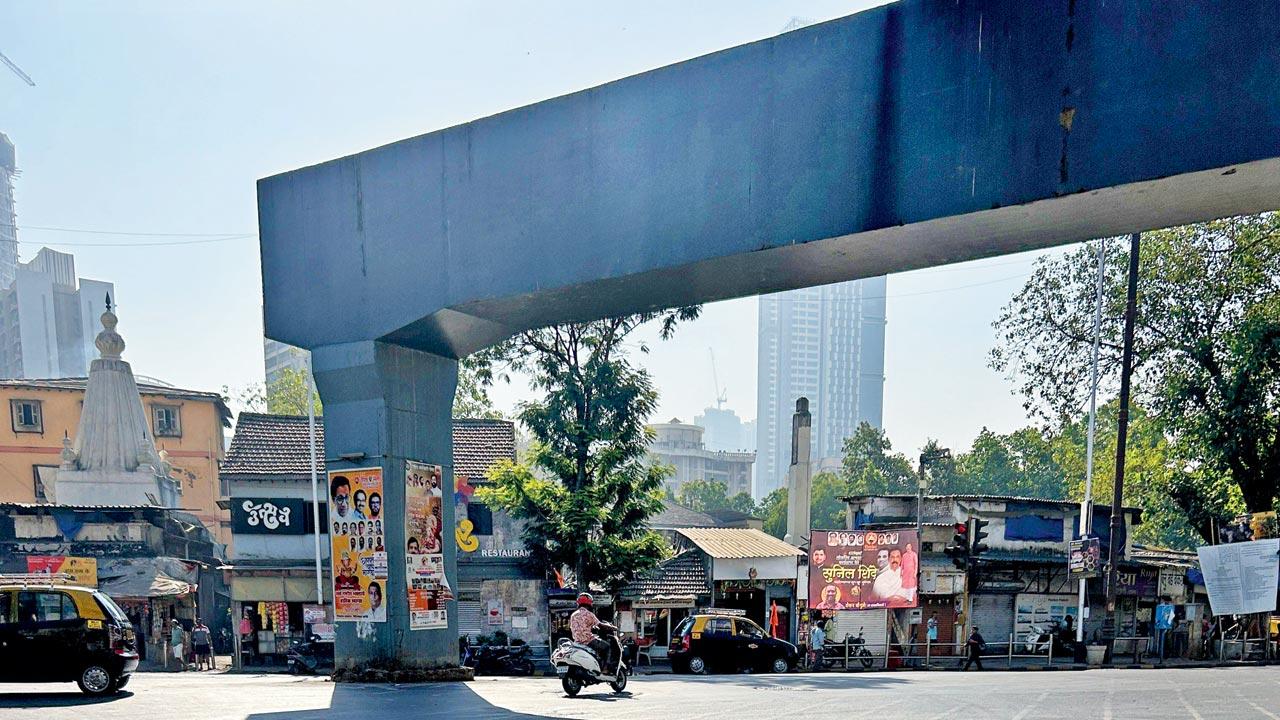 A junction cross makes crossing the road safer for pedestrians
A junction cross makes crossing the road safer for pedestrians
6 Junction cross: Junction crosses visually make the roads look crammed, causing cars to slow down at the signal, while also making the roads easier to cross. While Byculla has one such junction cross, a better one exists at Nana Chowk. Another one once existed near CSMT station, but was taken down because of its impact on the traffic.
7 Tactile paving: There is no tactile paving along the roads and the station, making it difficult for a visually-impaired person to negotiate.
On Every Sunday
Log on to @walkingprojectindia (for upcoming walks and reports)
Free
 Subscribe today by clicking the link and stay updated with the latest news!" Click here!
Subscribe today by clicking the link and stay updated with the latest news!" Click here!








